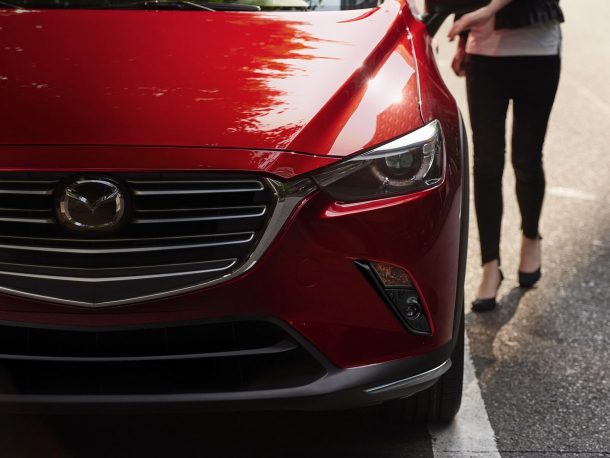When ICE Isn't Enough: Mazda's First Electric Still on Track for 2020, Plug-ins to Follow

Despite the recent development of a high-MPG, low-emission gasoline four-cylinder, Mazda’s future depends on lowering its emissions footprint even further. With regulators — especially those in Europe — backing ever more stringent environmental standards, Mazda hopes to avoid Fiat Chrysler-like penalties by adding a product at odds with the brand’s heritage. An electric vehicle.
With the help of its partners, Mazda’s new EV will make an appearance next year, followed up with a crop of plug-in hybrids buyers are more likely to take home.
In an interview with Automotive News, CEO Akira Marumoto said the popularity of the compact CX-5 is a major reason why his company’s European fleetwide emissions target remains unmet. The declining popularity of small diesel-powered models is another factor.
While the innovative Skyactiv-X internal combustion engine will certainly help the company make strides towards its goal, Marumoto said, it won’t be enough. (European orders for Mazda 3 models equipped with the engine opened last week; North American customers remain in wait-and-see mode).
Turning to future products, Marumoto said “the first Mazda battery-electric vehicle will hit the market next year. Finally, we will introduce plug-in hybrid models from 2021 or 2022. So we will eventually achieve the target, although we will have some difficulties in 2020.”
Smaller than its Japanese rivals and lacking their impressive R&D capability (as well as cash reserves), Mazda fields zero hybrids or EVs in its lineup. This is where teamwork comes in. Two years ago, Toyota bought a 5.05 percent stake in Mazda, with the two soon joining supplier Denso in signing an agreement to “jointly develop basic structural technologies for electric vehicles.” Financially and technologically, the effort is being spearheaded by Toyota, which footed 90 percent of the bill. Mazda and Denso ponied up the remainder.
The nature of the looming EV isn’t clear, though its development, removed from the rest of the Mazda product line, will ensure it appears as a standalone model. As for plug-in hybrids, Mazda isn’t the first rival automaker to benefit from Toyota’s development prowess. Ask Subaru about that.
A new rotary engine that may one day appear beneath the hood of a Mazda sports car might also find a home in the brand’s electrified offerings.
“Its first application will be as a range extender for EVs,” Marumoto said. “Inside Mazda, we all have the dream of seeing one day a vehicle powered by a rotary engine. But given the number of things we have to do, we had to put this on the back burner, and we have no time frame.”
[Image: Mazda]

More by Steph Willems
Latest Car Reviews
Read moreLatest Product Reviews
Read moreRecent Comments
- MaintenanceCosts RAM! RAM! RAM! ...... the child in the crosswalk that you can't see over the hood of this factory-lifted beast.
- 3-On-The-Tree Yes all the Older Land Cruiser’s and samurai’s have gone up here as well. I’ve taken both vehicle ps on some pretty rough roads exploring old mine shafts etc. I bought mine right before I deployed back in 08 and got it for $4000 and also bought another that is non running for parts, got a complete engine, drive train. The mice love it unfortunately.
- Statikboy I see only old Preludes in red. And a concept in white.Pretty sure this is going to end up being simply a Civic coupe. Maybe a slightly shorter wheelbase or wider track than the sedan, but mechanically identical to the Civic in Touring and/or Si trims.
- SCE to AUX With these items under the pros:[list][*]It's quick, though it seems to take the powertrain a second to get sorted when you go from cruising to tromping on it.[/*][*]The powertrain transitions are mostly smooth, though occasionally harsh.[/*][/list]I'd much rather go electric or pure ICE I hate herky-jerky hybrid drivetrains.The list of cons is pretty damning for a new vehicle. Who is buying these things?
- Jrhurren Nissan is in a sad state of affairs. Even the Z mentioned, nice though it is, will get passed over 3 times by better vehicles in the category. And that’s pretty much the story of Nissan right now. Zero of their vehicles are competitive in the segment. The only people I know who drive them are company cars that were “take it or leave it”.


































Comments
Join the conversation
They should name their electrics RX and bill them as the evolution of the rotary engine. Show a gas rotary morphing into an electric.
Mazda is a lot bigger than Subaru, by volume about 60% (1.6 million versus 1.0 million). Subaru is so dependent on the US, over 70% of its production is sold there, but at least Mazda is competitive worldwide unlike Subaru. Subaru is the dinky little auto company of Japan. What the post author thinks Toyota have taught Subaru is beyond me. The D4S in the BRZ/GT86 is about it. Subaru didn't take the bait on dual port and DI injection on any of its models after that initial fiasco and god knows how many replaced engines with popped DI injectors, chirping high pressure fuel pumps, etc. Toyota don't even know how to make their cars go around corners like Subaru, and subbed out the Supra to BMW. Toyota has a hybrid system that works - might as well flog it to its rivals in which it has some stock share and make some loot.